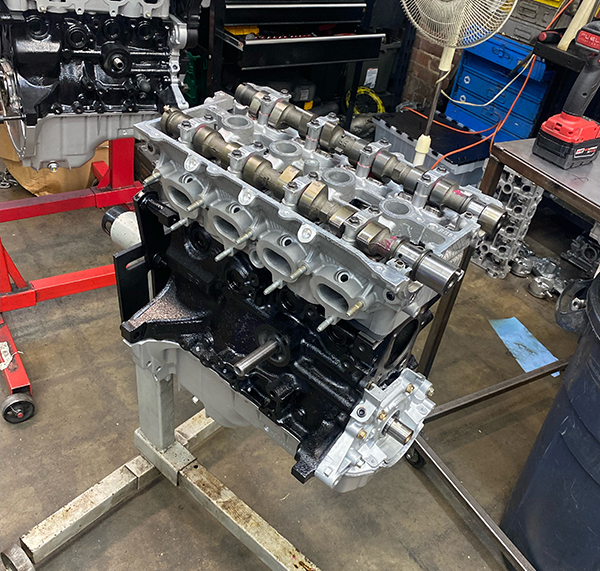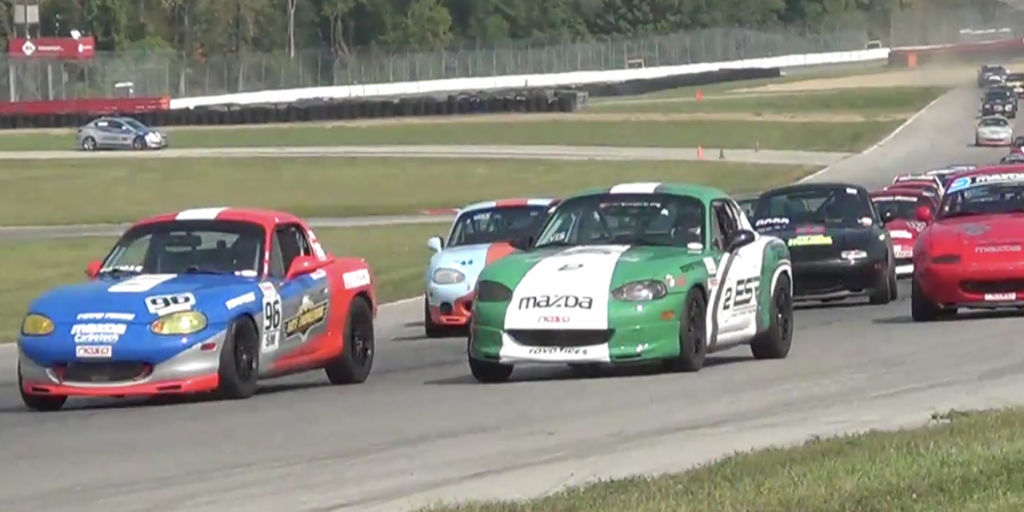The fastest way to make a small fortune in racing is to start with a large one! This is one of the thousands of sayings we all hear in racing. People in the pits, on the small screen, on the big screen, or even at family cookouts talking about anything car related. Man has been racing since the beginning of time and when we add engines, it just keeps getting faster. Whether it is a straight line, around an oval, stage, dirt, ice, pavement, or road course, racing has something out there for every gearhead or hot shoe on the planet.
I’m going to cover road racing, then start to narrow my sights to club racing. When you start thinking of club road racing, we think of vintage or maybe GT car racing at marvelous tracks like Road Atlanta, Sebring, Laguna Seca, and Virginia International Raceway (VIR) just to name a few. In terms of the cars out there, of all the manufactures in the world during any given weekend, Mazda is able to boast over 51% of all SCCA race engine power on the track! That is a tall order. With that in mind, let us focus on cost and how to go racing without having to start with a huge fortune.

To set our eyes on the prize, what about SPEC racing? SPEC racing is very attractive. It gives us a uniform platform that lends itself to a driver’s market with more skillful driving and competition. Reasonable cost models and less R&D for the drivers and teams that want to go racing, should reduce cost and help promote seat time. Now, does this mean you can go cage a grocery getter, slap some go-fast parts on and win the championship? Well in short – NO! What this does mean is you can get a donor car and start a good race program with proven support from the platform like SPEC MX-5 or SPEC Miata. Mazda supports these SPEC classes and several others not mentioned in this article. There are also several sanctioning bodies that race across the country with these classes and have hundreds of events available.
At Race Engineering, which is my engine shop, one discipline we practice is SPEC engines for several different series. Each SPEC series has its own guidelines and rule sets that have levels of tech or scrutineers. SPEC Miata within the SCCA (Sports Car Club of America) is set by the GCR, better known as the General Competition Rules. This publication governs everything from conduct of the driver to the limits and specifications of the cars allowed to race in each class, including SPEC Miata.
You can use a 100% stock engine or a donor engine and race in the class, however, you will not have the most power or torque. Having a “PRO” engine does not necessarily mean you will have the fastest either. What it will mean is that depending on who you chose to build your motor, it should meet the hundreds of rules and tolerances to make power to get the good drivers to the front of the field.

For example, some of the rules are that you’re limited to factory pistons – both standard bore and first oversize – for the years of the SPEC Miata allowed to run in this class. That does not mean there aren’t several sizes and forged options available, it means Race Engineering is limited to a very finite selection and that selection cannot be modified. To keep innovation (also known in some circles as cheating) to a minimum, there is a catch all rule that says if there is no rule that says you CAN do it, then you CANNOT do it! Now “it” can be anything from adding weight in a certain location or weight reduction of a part or moving a pulley. In our line of work, it is affectionately called the God rule.
When talking about the rules engine builders can work with, each and every component of the engine is addressed. From the oil pan to the valve cover and every bolt in between. Since current SPEC Miata years range from 1990-2005, we are working with parts and cars that are a minimum of 17 years old and as old as 32 years. Mazda has stepped up and gone above and beyond to provide new parts to the racers and shops at a significant discount, not to mention they are still working to innovate parts to make these race cars better every year with the competition parts they offer.
Mazda works directly with the sanctioning bodies to help develop rules and supply parts to make the market competitive and available to everyone in the sport. Isolating the engine from the rest of the program, Race Engineering can order everything needed, with only a few exceptions. The rule sets are not just limiting us to bore and stroke, we have the valvetrain to contend with and clearances throughout the engine that are spelled out within the rule set too.

A typical SPEC Miata engine build consists of taking the core engine from the customer and disassembling the engine and inventorying the components. Pistons, oil pump, water pump, gaskets, and bearings are all scrapped. Then, Race Engineering starts the cleaning process with the head, block, rods, etc. Once we clean everything, the machining process gets started. The block has all its freeze plugs replaced so we can then bore to the desired capacity. Then, we make sure the crank is ready. The rules do not allow turning the crank, so it has to be standard for the class. We verify the rods are perfect and matched up or they will need to be replaced. The block can be decked to meet factory compression ratio, but the head has a few more rules.
A valve job on a SPEC Miata consists of three flat angles as they are not allowed any “radius” work. These angles also have limits – the seat must use a 45-degree angle with a width range of 0.030˝-0.050˝ and there must be a top angle and bottom angle. The head also has a minimum height, so there are limits there as well. Each and every one of these limitations can be policed on a tear down.

Rules are updated monthly at the most, which keeps us and the rest of the racing program on our toes! This gives you an idea of how a SPEC class engine discipline is handled. While any good engine builder can accomplish this task, it is always better to contact someone with experience in the field. Does this mean the shade tree mechanic could not build a SPEC engine? Of course they can, but will it be as precise or will the tolerances be as close as you would want in order to compete in this market or class? Race Engineering builds engines for countless classes and as many as 10 SPEC classes, but SPEC Miata is by far the most popular SPEC, and Miata is the most popular platform for our street and race engines.
Unlike some other classes and types of racing, engine builders are able to compete in this market not only by building these engines, but we are able to race these cars as well. Old school or new school styles all get to meet at the track and deliver a hell of a show. My father, Frank Graham, raced Production in the ‘60s and ‘70s winning the South Eastern Championship during that time. His engines rivaled the best engine builders of the day. He would spend 100 hours working by hand on a single head. Here at Race Engineering, we take that history and current know-how with modern equipment to speed up that process and make a championship-level product for our clients.

The amount of time from first to 10th in a SPEC Miata national race is sometimes less than 0.5 seconds! While they say road racing is a gentleman’s sport, the phrase ‘rubbin’ is racin’ isn’t only seen on a southern oval, but also in a 17-turn monster road course! SCCA has had fields this season as large as 79 cars and it is only February! You still cannot win a race in turn one or on lap one, but with the competition this tight, several drivers will try!
While there is no such thing as cheap racing, SPEC racing can be some of the most competitive, fun, family oriented, passionate racing, that can also be cost effective. Budget racing is relative, and each person or team talks about that term “budget” differently. Talking about that fortune, tires for a GT1 hot rod can cost more in one weekend than a PRO motor for SPEC Miata! You can find a well-sorted SPEC Miata to start in the $20,000 range and a national competitive build for about double that. Compared to a Porsche GT at $193,000 before a cage and prep, it takes a much smaller fortune to start at this SPEC level than other racing platforms. Our race shop exists to help clients navigate these waters. Race Engineering has done this for several years and can help as you grow your program. EB










